Jerusalem’s Old City is a captivating tapestry that weaves together millennia of history, religious significance, and cultural richness. Nestled within ancient walls, this timeless district invites visitors to explore its iconic landmarks, from the hallowed Western Wall to the sacred Via Dolorosa. As one navigates its winding alleys, the city’s profound influence on the world’s major faiths becomes palpable, leaving an indelible mark on all who venture into this extraordinary urban sanctuary. What secrets and stories lay in wait, ready to be uncovered by those who dare to enjoy the captivating essence of this remarkable place?
Key Points
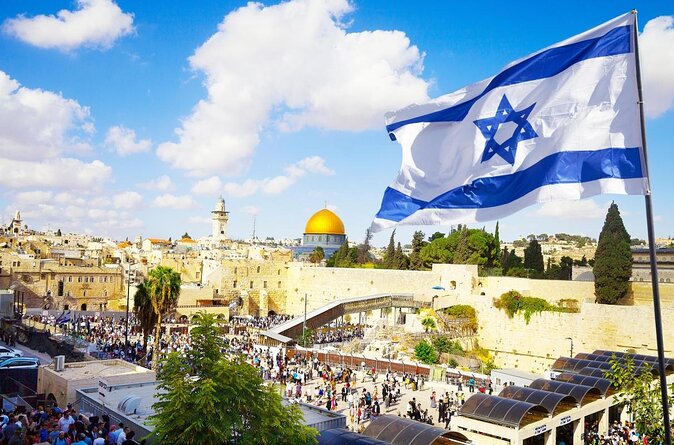
- The Old City of Jerusalem is a hub of profound religious and cultural significance, with a history spanning over 3,000 years.
- The Old City houses iconic sites such as the Western Wall, the Via Dolorosa, and the Church of the Holy Sepulchre.
- The Via Dolorosa, a sacred processional route, offers a profoundly moving experience for Christian pilgrims to retrace the Passion narrative.
- The Western Wall, a remnant of the ancient Jewish Temple, is the holiest site where Jews are permitted to pray.
- Mount Zion in the Old City is home to the Tomb of King David and the Room of the Last Supper, drawing countless pilgrims and travelers.
Jerusalem’s Rich History
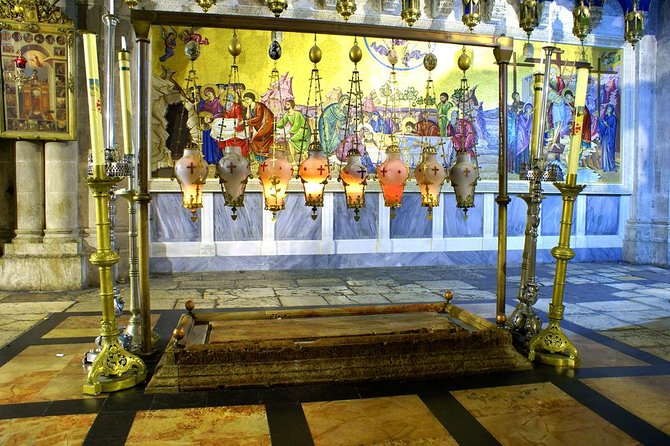
Jerusalem’s storied history spans millennia, with the Old City at the heart of its profound religious and cultural significance. Continuously inhabited for over 3,000 years, this walled enclave has witnessed the rise and fall of empires, the convergence of faiths, and the enduring resilience of its diverse communities.
From the ancient Israelites to the Byzantine, Islamic, and Ottoman rule, each era has left an indelible mark on the city’s architecture, traditions, and collective memory.
The Old City’s four quarters – Jewish, Christian, Muslim, and Armenian – reflect the multifaceted tapestry of Jerusalem’s past, a testament to its unparalleled historical significance and the enduring spirit of its people.
Want to dig deeper into Jerusalem? We've also reviewed these city tours
Top Attractions of Old City
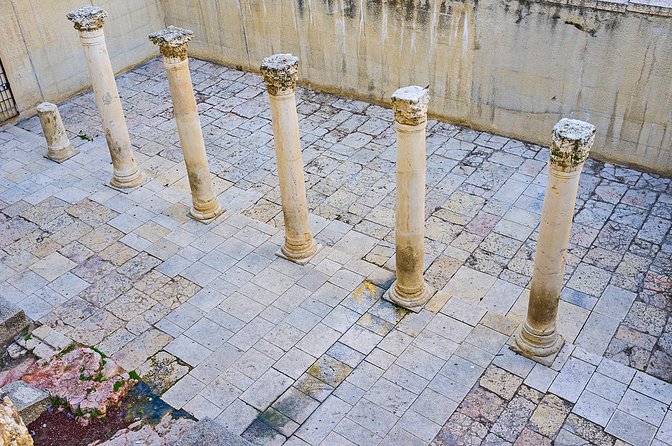
Within the storied confines of Jerusalem’s Old City, visitors can explore a tapestry of iconic landmarks that have captivated pilgrims and historians for centuries.
The Western Wall, a remnant of the ancient wall that once surrounded the Jewish Temple, stands as a revered site of prayer and contemplation.
Nearby, the Via Dolorosa, the path believed to be the route Jesus walked on the way to his crucifixion, winds through the Old City’s narrow streets, leading to the Church of the Holy Sepulchre, a sacred Christian shrine.
Mount Zion, home to the Tomb of King David and the Room of the Last Supper, offers a glimpse into the city’s rich religious heritage.
These and other iconic sites make the Old City a must-visit destination for anyone seeking to enjoy Jerusalem’s profound historical and spiritual legacy.
Exploring the Via Dolorosa
As visitors stroll along the Via Dolorosa, they’ll retrace the steps of Jesus’ final journey, with each of the 14 Stations of the Cross marking a pivotal moment in the Passion narrative. This sacred processional route winds through the heart of the Old City, offering a profoundly moving experience for Christian pilgrims and those seeking to connect with the rich spiritual history of Jerusalem. Along the way, the guide provides in-depth commentary, helping bring these hallowed sites to life. Visitors can pause for reflection at key stops, including the Church of the Holy Sepulchre, where Jesus was crucified, buried, and resurrected.
| Station | Event |
|---|---|
| 1 | Jesus is condemned to death |
| 2 | Jesus accepts His cross |
| 3 | Jesus falls the first time |
| 4 | Jesus meets His mother Mary |
| 5 | Simon of Cyrene helps Jesus carry the cross |
The Significance of Western Wall
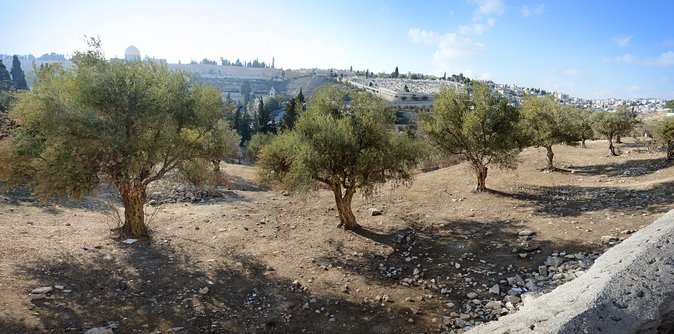
Visitors continuing along the sacred processional route of the Via Dolorosa will come upon the Western Wall, one of the most revered and significant sites in all of Jerusalem.
This ancient limestone wall, part of the original outer retaining wall of the Temple Mount, has long held immense religious and cultural importance for the Jewish people.
It’s considered the holiest site where Jews are permitted to pray, as it’s the closest accessible point to the sacred Temple Mount.
Millions of people from around the world visit the Western Wall each year to pray, leave written notes, and connect with their spiritual heritage.
Its enduring significance reflects the deep, unbreakable bond between the Jewish people and their ancestral homeland.
Mount Zion and Its Wonders
Mount Zion’s storied history and sacred sites draw countless pilgrims and travelers to this revered hilltop in the heart of Jerusalem’s Old City. Atop this ancient and spiritually significant elevation, visitors discover an array of hallowed landmarks that have shaped the course of world religions and civilizations for millennia.
Among Mount Zion’s most renowned wonders are the Tomb of King David, the Room of the Last Supper, and the Abbey of the Dormition. These sites offer a window into the region’s rich tapestry of biblical events, medieval history, and modern religious observance. Navigating the serene yet captivating landscape of Mount Zion is a profound and unforgettable experience for all who visit.
| Site | Significance |
|---|---|
| Tomb of King David | Resting place of the revered biblical monarch |
| Room of the Last Supper | Location of Jesus’ final meal with his disciples |
| Abbey of the Dormition | Commemorates the Assumption of the Virgin Mary |
| Mount Zion Cemetery | Ancient Jewish burial ground with historic tombstones |
- Palestine Revealed: 2-Day Private Tour From Jerusalem
- Travel From Jerusalem To Bethlehem and Dead Sea – Daily Group West Bank Tour
- Jerusalem Boutique Tour From Tel Aviv
- Private Tour Jerusalem Old City
- Ashdod Shore Excursion: Jerusalem and Bethlehem – for Cruise Ship Guests Only
- Travel to Bethlehem Half Day Guided Tour From Jerusalem & Telaviv
Immersive Cultural Experience
A captivating Jerusalem Old City tour immerses travelers in the vibrant cultural tapestry that has defined this ancient city for millennia, offering an unparalleled exploration of its storied past and spiritual resonance.
As visitors traverse the winding streets, they’ll encounter a mosaic of religious and historical landmarks that bear witness to the city’s enduring multicultural heritage.
From the storied Western Wall to the iconic Via Dolorosa, the guided tour provides rich insights, transporting guests back in time and fostering a deeper understanding of Jerusalem’s profound significance.
This immersive cultural experience allows travelers to connect with the city’s timeless spirit, leaving them with indelible memories and a newfound appreciation for its timeless allure.
Practical Tips for Visitors

To make the most of a Jerusalem Old City tour, visitors should keep a few practical considerations in mind.
One key aspect is the tour’s accessibility, as it’s not suitable for those in wheelchairs or with small children under 4 years old. Plus, guests are advised to dress modestly, covering their shoulders and knees, to respect the religious significance of the sites visited.
The tour provides pickup and drop-off from select central hotels, with a confirmation email specifying the final pickup point. Groups are limited to a maximum of 50 travelers, ensuring a personalized experience.
Lastly, the tour is fully guided, allowing visitors to gain in-depth insights into the region’s rich history and cultural heritage.
Frequently Asked Questions
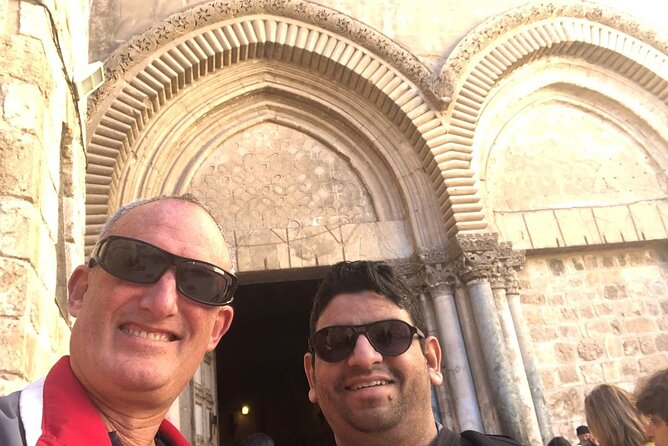
Commonly, visitors inquire about the tour’s duration, as the experience covers Jerusalem’s iconic Old City and its many historical and religious sites.
The full-day guided tour lasts approximately 8 hours, providing ample time to explore the city’s highlights.
Pickup and drop-off are available from select central hotels, ensuring a convenient start and end to the journey.
Participants should note that the tour isn’t wheelchair accessible, but it’s well-suited for most travelers.
Given the spiritual nature of the sites, the tour isn’t recommended for children under 4 years old.
With a maximum group size of 50, the experience offers an intimate, personalized exploration of Jerusalem’s enduring legacy.
Frequently Asked Questions
What Is the Best Time of Year to Visit Jerusalem?
The best time to visit Jerusalem is during the spring or fall when the weather is mild and comfortable. Summers can be hot and dry, while winters can be cool and rainy, making these seasons less ideal for sightseeing.
Can I Bring Food and Drinks on the Tour?
Guests can bring their own food and drinks on the tour. However, the tour company recommends packing light as there’s limited storage space on the vehicle. Consuming food and drinks is allowed during scheduled breaks and free time throughout the day.
Is There a Dress Code for the Religious Sites?
There is a dress code for the religious sites visited on the tour. Visitors are expected to wear modest clothing that covers the shoulders, knees, and midriff. Hats or head coverings may also be required in certain areas.
Can I Take Photos Inside the Holy Sites?
You can generally take photos inside the holy sites, but it’s important to be respectful and follow any site-specific rules. Some locations may restrict photography, so it’s best to ask your guide for guidance on appropriate behavior.
Are There Any Accessibility Options for the Tour?
The tour isn’t wheelchair accessible, but infants can join on laps. While it’s not suitable for young children, travelers of all ages are welcome. Just keep in mind the group size is limited to 50 people maximum.
Recap
The Old City of Jerusalem is a captivating tapestry of history, faith, and cultural heritage.
Visitors can enjoy the city’s timeless allure, from venerating the Western Wall to tracing the footsteps of Jesus along the Via Dolorosa.
The iconic sites and the city’s enduring resilience make it a profound and meaningful destination for pilgrims and travelers alike.
Jerusalem’s rich past continues to inspire awe and reverence in all who explore its ancient, hallowed streets.
More City Tours in Jerusalem
- 9 Languages Audio Guide For Jerusalem Old City
- Jerusalem Old City & Mount Zion From Jerusalem
- Jerusalem To/From Tel Aviv City – Private Intercity Transfers-
- Private Tour: Old City of Jerusalem Christianity Tour
- Private Guided Tour in Old City Jerusalem
- Classic Jerusalem Old City Tour – Dguide Self Guiding App
More Tour Reviews in Jerusalem
Not for you? Here's more things to do in Jerusalem we have recnetly reviewed
- 2 Best Shopping Tours In Jerusalem
- 5 Best 2 Day Tours In Jerusalem
- 5 Best Full-Day Tours In Jerusalem
- Bob Marley Mausoleum Nine Miles From Occh Rios
- Jerusalem From One End to the Other- by Rail
- Dead Sea 1/2 Day Mini Group From Jerusalem. up to 6 Pax Only
- Capernaum, Nazareth, and the Sea of Galilee Day Trip From Jerusalem
- Day Trip to the Dead Sea Valley With Garytheguide
- Jerusalem to Ben Gurion Airport Private Transfer
- Old City Jerusalem Adventure With Private Guide Ed Snitkoff
- Jerusalem Temple Mount & Dome of the Rock
- Private Transfer Between Ben Gurion Airport and Jerusalem
